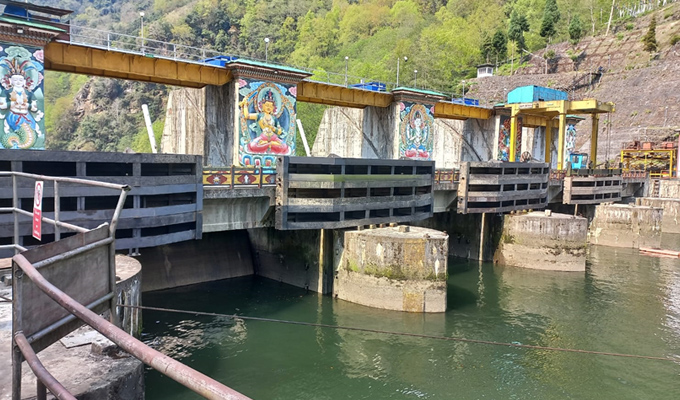Development of a Hydropower Forecasting System Framework and Implementation of a Pilot Project for Hydropower Optimization in Bhutan

The consultancy contract on the Project “Development of a Hydropower Forecasting System Framework and Implementation of a Pilot Project for Hydropower Optimization in Bhutan” between USAID-SAREP and TERI to support the Druk Green Power Corporation (DGPC) Limted, Bhutan was started in January, 2024.
Consultancy Scope and Objectives
The primary aim of this study is to formulate and implement a comprehensive framework alongside an associated pilot initiative, integrating cutting-edge Real-Time Data Acquisition Systems (RTDAS) and reservoir inflow forecasting. The overarching goal is to equip Bhutan with the capability to accurately forecast reservoir inflow on an hourly basis, generated daily with a lead time of 72 hours, specifically tailored for the operational needs of the Chhukha Hydropower Plant. The core objective of implementing this forecasting system encompasses two key aspects:
Optimization of participation in the day-ahead electricity market: Accurate inflow forecasting enables hydropower operators to make informed decisions regarding electricity generation and trading activities, maximizing revenue potential and ensuring efficient utilization of available resources.
Generation of hydrological data for long-term analysis: Beyond immediate operational considerations, the forecasting system will facilitate the generation of comprehensive hydrological data, enabling in-depth analysis and strategic planning for future resource management and infrastructure development initiatives.
By addressing these aspects, the proposed framework and pilot project aim to enhance the operational resilience and efficiency of the Chhukha Hydropower Plant, while simultaneously laying the foundation for broader advancements in water resource management and renewable energy utilization in Bhutan.
The assignment is broadly divided into two parts:
First, the designing of a hydro-meteorological network involves establishing a system of instruments and stations to monitor hydrological and meteorological parameters such as rainfall, temperature, humidity, river levels. Identification of suitable locations for instrumentation and implementation of a robust data management system to store, process, and analyze the collected data. There will also be a web portal that will be designed for visualization of the data from the hydro-met network.
The second task involves building suitable hydrological forecast models based on the available data and integration of the hydrological model with power forecast model. These models will be calibrated to historical events. The calibrated models and real-time forecast rainfall and temperature data will be used for implementation of the models.
Pilot Basin
Wangchu Basin
Wangchu is a major river in Bhutan, playing a crucial role in the country's hydrology, ecology, and socio-economic development. It flows through the western part of Bhutan, primarily in the Thimphu Dzongkhag. The river originates from glaciers and snowmelt in the high-altitude regions of the Greater Himalayas. Its headwaters are fed by numerous tributaries, including streams and smaller rivers, which merge to form the main channel of the Wangchu.
The Chhukha Hydropower Plant (CHP) is one of Bhutan's pioneering hydropower projects and a cornerstone of the country's energy sector. Situated on the Wangchu in Chhukha District, Central West, the Chhukha Hydropower Plant harnesses the river's flow to generate electricity. It is approximately 45 kilometers downstream from the capital city, Thimphu. The Chhukha Hydropower Plant has an installed capacity of 336 megawatts (MW),
Construction of the Chhukha Hydropower Plant began in the early 1970s with assistance from The Government of India. The project involved the construction of a dam, powerhouse, and associated infrastructure to harness the energy of the Wangchu. The hydropower plant is equipped with a concrete gravity dam that creates a reservoir known as the Chhukha Reservoir. The reservoir serves as a water storage facility (daily peaking), regulating the flow of water to the powerhouse and ensuring continuous electricity generation, especially during the dry season and transition periods between wet and dry seasons.
The electricity produced by the Chhukha Hydropower Plant contributes significantly to Bhutan's domestic energy supply and export revenue. A portion of the generated power is used to meet the country's growing energy demand, while surplus electricity is exported to neighbouring India through bilateral agreements. The Chhukha Hydropower Plant has brought significant socio-economic benefits to Bhutan, including revenue generation, employment opportunities, and infrastructure development. The project has also contributed to rural electrification, improving access to electricity in remote areas and supporting socio-economic development initiatives.
